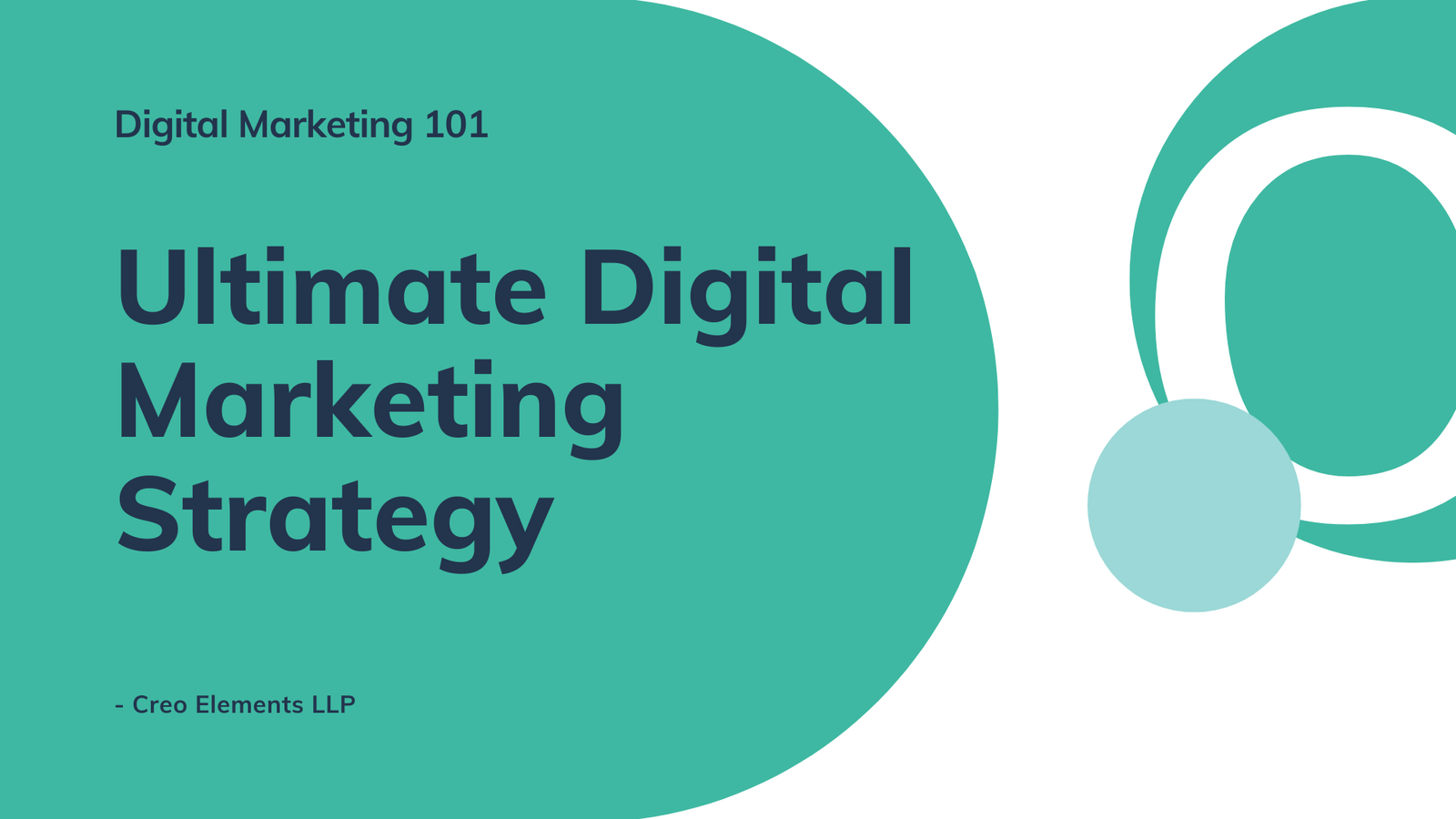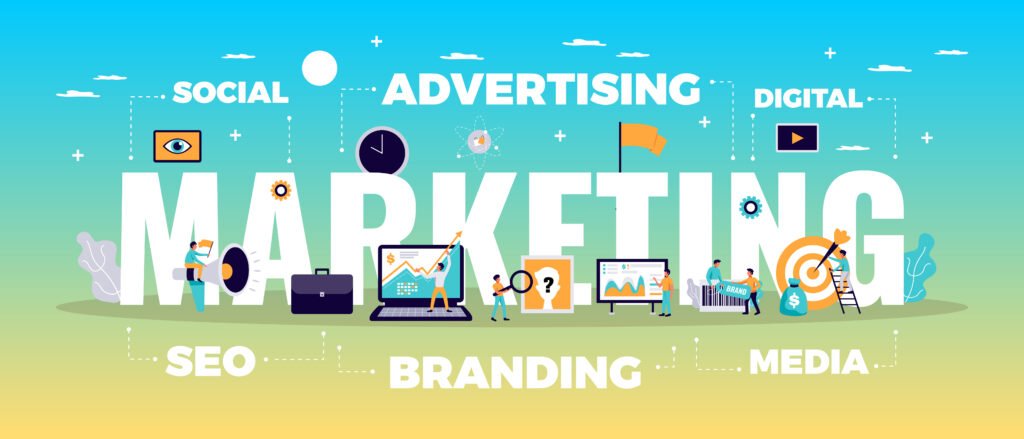Ultimate Digital Marketing Strategy: Moving Beyond the ‘What’ to the Critical ‘How’

Introduction:
Unveiling the Strategic Landscape
Digital marketing is everywhere—woven into every click, search, and scroll. But the real question isn’t just “what” digital marketing is; it’s “how” to make it work in a way that creates a lasting impact, not just fleeting traffic.
This isn’t another list of tactics you’ve already heard. It’s about looking beneath the surface—understanding the deeper mechanics that turn a scattered online presence into a cohesive, powerful strategy. Why do some brands stay in your mind effortlessly while others fade into the noise? What sets apart campaigns that drive real engagement from those that barely make a ripple?
To answer that, we’ll break down the strategic foundation that connects platforms, content, and audience psychology into something impactful and lasting.

Strategic Component Breakdown:

A brand isn’t just a logo, colour palette, or slogan. These elements serve as signals, but signals only matter if they carry real weight. The difference between a forgettable brand and one that people rally around isn’t in the visuals or even the product itself—it’s in the experience it creates.
Every interaction with a brand shapes this experience. Not just the big moments like launch campaigns or advertisements, but the subtle ones too—the tone of an email, the consistency of social media engagement, and the micro-moments that add up to something memorable.
A strong brand narrative is important, but what matters more is how it lands. Does it just sound good, or does it create a genuine emotional shift? Brand archetypes and frameworks can be useful, but true resonance isn’t about fitting into a mould. The brands that leave a lasting impression aren’t the ones checking all the right boxes—they’re the ones creating a feeling that people don’t want to lose.
So, how does that happen? By ensuring that every brand interaction is consistent, intuitive, and unmistakably unique. A brand’s values shouldn’t just be words on a website; they should be evident in every touchpoint, from customer support emails to ad campaigns. True brand loyalty isn’t built through what a brand says—it’s built through what people believe after every interaction.

Digital Reputation:
The Art of Influence, Not Just Reaction
Reputation isn’t built in moments of crisis; it’s shaped through the quiet consistency of your voice, presence, and ability to influence the right conversations. It’s not enough to respond to industry shifts—you need to be leading them.
Many view digital reputation as a defensive game, focused on damage control and crisis management. But the real power comes from shaping the narrative before it’s even questioned. Influence isn’t earned by reacting—it’s built through strategic consistency, thought leadership, and a commitment to adding value.
From Content Creation to Thought Leadership
Anyone can publish content, but not everyone can shape an industry. Are you merely producing content, or are you setting the agenda? Thought leadership isn’t about frequency—it’s about originality, depth, and a willingness to challenge conventional thinking. It’s about making people stop, think, and reimagine.
And listening? That’s just the beginning. Social listening provides insights, but its real value lies in action—moving from passive observation to active engagement, from responding to leading. The brands that dominate conversations aren’t waiting for topics to emerge; they’re the ones creating them.
Relationships:
The True Currency of Influence
Networking is transactional. Relationships are transformational. Influence isn’t measured in likes or shares—it’s measured in trust. Who do people turn to when they need insight, clarity, or innovation? Who are you intentionally connecting with, learning from, and elevating in the process?
The Essential Question:
Are You Leading or Just Watching?
Reputation isn’t just about being seen—it’s about being remembered for the right reasons. So, ask yourself: Are you merely observing the shifts in your industry, or are you actively shaping its future? Are you waiting for conversations to unfold, or are you the one starting them?

The most influential voices aren’t the loudest; they’re the ones people trust. And trust isn’t claimed—it’s earned, moment by moment, insight by insight, action by action.
Are you ready to move beyond reacting and step into the role of a true industry leader?
Content Strategy:
Guiding Journeys, Not Just Posting Content
Content isn’t just about filling up a blog or keeping social media active—it’s the backbone of audience discovery, trust, and engagement. Every piece should have a purpose beyond clicks and views; it should guide potential customers through a seamless journey, moving them from awareness to action.
Too often, content is treated as a task rather than a strategy. But posting regularly isn’t enough. What matters is how each piece fits into a larger narrative, shaping meaningful experiences that resonate.

Beyond Engagement:
Personalization & High-Impact Experiences
Personalization is more than just using a first name in an email. True personalization anticipates needs, adapts in real time, and delivers the right message at the right moment. Generic content is fading—interactive, immersive storytelling is the future. The best content evolves based on user behaviour, making every interaction feel uniquely relevant.
Mapping Content to the Customer Journey
A content calendar is just a tool—the strategy behind it is what truly makes an impact. Content shouldn’t exist in isolation; it should serve as a guide, nurturing audiences through every stage of their decision-making process. From the first touchpoint to long-term retention, content should educate, engage, and build trust.
Shift your mindset: Content isn’t just about what you say—it’s about the journey you create.
Moving from Content Creation to Experience Design
In a digital landscape saturated with information, the brands that stand out are those that treat content as more than just words on a screen. They see it as an experience—carefully designed, strategically placed, and deeply connected to the customer’s journey.
Now is the time to shift from merely producing content to architecting meaningful experiences. Because in the end, content isn’t just about what you say—it’s about the journey you create.

Targeted Promotions:
Predicting Needs, Not Just Showing Ads
Effective marketing isn’t just about placing the right ad in front of the right audience—it’s about understanding their needs before they even articulate them. Today’s consumers expect more than basic targeting; they want brands to anticipate their next steps and deliver seamless, intuitive experiences.
The power of targeted promotions isn’t in the ads themselves—it’s in the intelligence behind them. Brands that use data-driven insights to move beyond surface-level targeting create marketing experiences that feel personal and effortless.
From Basic Targeting to Predictive Personalization
Personalization has moved beyond demographics and name insertion. With predictive analytics, brands can anticipate user intent and create campaigns that align seamlessly with real-time behaviour and future needs. This isn’t just about ad optimization—it’s about making every interaction feel relevant and natural.
Marketing Attribution: Measuring Real Impact
Tracking conversions is one thing; understanding the deeper impact of each marketing channel is what separates good campaigns from great ones. Marketing attribution should go beyond simple performance metrics—it should reveal which strategies drive engagement, retention, and revenue.
Moving Beyond Ads to Meaningful Engagement
Consumers are bombarded with marketing messages daily. The brands that win are those that go beyond visibility and deliver true relevance. Success comes from anticipating behaviour, creating seamless value-driven experiences, and building lasting connections—not just serving ads.
The future of marketing: Less interruption, more intuition.
Public Relations:
Shaping Perception, Not Just Managing Crises

Public relations (PR) isn’t just a safety net for when things go wrong—it’s the strategic force that ensures your brand is seen, heard, and trusted in the right way, long before a crisis ever appears. While marketing drives attention and sales, PR shapes the very foundation of how people perceive your brand, influencing everything from credibility to long-term loyalty.
The misconception? That PR is just about press releases, media coverage, and damage control. In reality, it’s about proactively crafting the stories that define your brand before the world does it for you. It’s the art of influence, relationship-building, and strategic storytelling—ensuring that when people talk about your brand, they’re saying the right things.
Relationship-Driven Influence:
The Human Side of PR
Influence isn’t about how loud your brand is—it’s about who listens when you speak. PR is fundamentally about relationships: with media, industry influencers, stakeholders, and—most importantly—your audience. It’s about credibility built over time, through consistent messaging, genuine engagement, and a commitment to adding value to the conversation.
In an era of social media and digital transparency, PR extends far beyond traditional outlets. It’s in the way your brand interacts with customers online, how it responds to challenges, and how it stays ahead of industry shifts. Every interview, every quote, every tweet—it all adds up to how your brand is perceived. And perception, in business, is everything.
Crisis Management:
Owning the Narrative Before It Owns You
Reputation isn’t built overnight, but it can be lost in an instant. While PR isn’t just about crisis management, a well-prepared strategy ensures that if a crisis does hit, you control the message rather than being controlled by it.
The key? Speed, transparency, and accountability. A brand that acknowledges issues, takes responsibility, and communicates effectively doesn’t just recover from crises—it strengthens trust. The worst PR disasters don’t happen because a company made a mistake; they happen when a company tries to hide it, deflect blame, or ignore the issue entirely.
True PR isn’t just about telling your story—it’s about ensuring that, when it matters most, people believe it.
Strategic Implementation:
Cultivating a Digital Ecosystem That Thrives
Success in the digital world isn’t just about having strategies—it’s about integrating them seamlessly into the very fabric of your business. A mature digital ecosystem isn’t built on isolated tactics; it’s a carefully orchestrated system where data, technology, and strategy come together to drive long-term value.

True digital transformation goes beyond campaigns and quick wins. It requires a culture of continuous innovation, where data-driven insights fuel smarter decisions, and adaptability becomes second nature. In a fast-evolving landscape, staying relevant means embracing agility—leveraging methodologies that allow for rapid iteration, constant optimization, and seamless scalability.
The organizations that thrive aren’t just reacting to change; they’re shaping it. They’re embedding digital excellence into their core operations, ensuring that every initiative, from marketing to customer experience, aligns with a larger vision of sustainable growth.
Concluding Insights:
Leading Digital, Not Just Doing Digital

It’s easy to get caught up in the mechanics of digital marketing—SEO, content, ads, automation—but the real challenge is moving beyond execution to strategic leadership. The difference between businesses that struggle and those that dominate their industries lies in their ability to see digital marketing as more than just a tool—it’s a system that, when properly aligned with broader business goals, becomes a powerful driver of innovation, customer loyalty, and long-term success.
Standing still isn’t an option. The digital landscape will keep shifting, and the only way to stay ahead is to commit to continuous learning and refinement. Strategies must evolve, new opportunities must be explored, and existing systems must be optimized for greater efficiency and impact.
Digital marketing isn’t a checklist—it’s a living, breathing ecosystem. The question isn’t just how to do it better, but how to make it work for you, fueling not just short-term wins, but a future where your brand leads, innovates, and inspires.